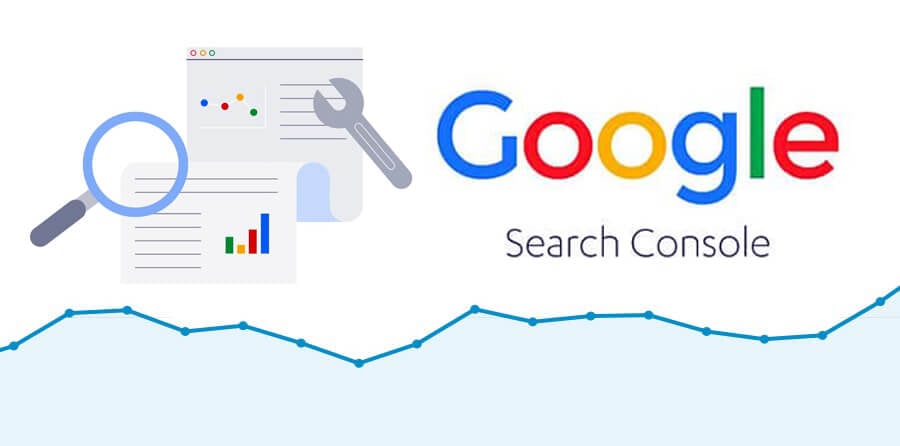How to Buy Website Traffic the Right Way to Boost Your Business
Learn how to buy web traffic the right way. Boost your website's traffic, increase sales, and maximize your ROI with targeted strategies.

-
Introduction
Were you looking to buy web traffic to boost leads and sales?
Increasing website traffic is a goal for every business owner, but quality traffic matters most. Organic SEO is a great long-term strategy, but paid traffic is the way to go if you need faster results.
This guide'll dive into the best methods to buy web traffic and how to maximize your ROI. From understanding what direct web traffic is to actionable steps for success, this post covers everything you need to drive real results.
-
What Is Web Traffic?
Web traffic refers to the number of visitors that land on your website from various sources such as search engines, social media, direct visits, referrals, and paid ads. It measures how many people are viewing your content, exploring your products, or interacting with your brand online. Quality web traffic, where visitors are genuinely interested in your offerings, is crucial for generating leads, sales, and overall business growth. Managing and analyzing your web traffic helps optimize marketing strategies to attract the right audience.
-
Types of Web Traffic Sources

Understanding web traffic sources is crucial for refining your marketing strategy, as it helps you identify where your visitors are coming from and how they interact with your site.
- Direct Traffic: Visitors who access your site directly via the URL, bookmarks, or untrackable links.
- Organic Search Traffic: Traffic from search engines like Google and Bing.
- Referral Traffic: Clicks from links on external sites.
- Paid Traffic: Visitors from paid ads, including PPC, display ads, and sponsored content.
- Social Traffic: Users arriving from social media platforms.
- Email Traffic: Traffic generated from email marketing campaigns.
- Other: Any traffic whose source or medium is unidentifiable by your analytics platform.
While tools like Google Analytics do a good job of segmenting your web traffic, they’re not always fully accurate.
To gain deeper insights into how your audience finds your site and which content drives traffic, it’s crucial to use UTM parameters. UTMs are small snippets of code added to URLs that help track the performance of specific campaigns or content pieces.
For instance, you can use UTMs to identify which social media post or email led to the most conversions, enabling you to make informed, data-driven decisions in the future.
-
Why To Buy Website Traffic
Buying web traffic can be a powerful strategy for businesses looking to boost online visibility and drive tangible results. However, it's crucial to approach this tactic with clear goals and proper targeting to maximize ROI.
Here are some compelling reasons to invest in paid web traffic:
- Generate sales from e-commerce platforms
- Increase newsletter subscribers
- Raise brand awareness for new products or services
- Inform public health initiatives or government communications
- Drive users into remarketing funnels
- Maintain website's statistics
While increased website visitors may feel satisfied, it's essential to focus on attracting high-quality, targeted traffic that aligns with your business objectives.
To maximize your return on investment (ROI) for paid traffic, it's crucial to see tangible results from your spending. To achieve this, set clear goals and use precise segmentation and targeting to pre-qualify your traffic.
By optimizing these aspects, you ensure that your investment effectively drives high-quality visitors to your site.
-
Effective Strategies for Buying Web Traffic
When considering purchasing web traffic, explore these proven approaches:
- Targeted Ad Networks
- Content Marketing Partnerships
- Social Media Advertising
- Native Advertising
- Email List Purchases
- Maintaining Website Statistics
-
Targeted Ad Networks

Targeted ad networks allow advertisers to reach specific audiences based on demographics, interests, behaviors, and other criteria. These networks specialize in catering to particular industries or niches, making them highly effective for reaching your ideal audience.
Key aspects of targeted ad networks:
- Industry-specific focus: Many ad networks cater to specific industries, such as finance, healthcare, or e-commerce. This ensures that your ads are seen by people who are likely to be interested in your products or services.
- Advanced targeting capabilities: These networks often offer sophisticated targeting options, allowing you to reach users based on complex criteria beyond basic demographics.
- High engagement rates: Since the ads are served on sites that match your target audience, they're more likely to resonate with viewers, potentially leading to higher engagement rates.
- Scalability: Targeted ad networks can help you reach a large audience quickly, especially if you're new to online advertising.
Best practices:
- Start with broad targeting and gradually refine your audience segments
- Regularly analyze performance data to optimize your campaigns
- Consider using retargeting to reach users who have previously interacted with your brand.
-
Content Marketing Partnerships

Content marketing partnerships involve collaborating with influencers, bloggers, or publishers in your niche to create and distribute valuable content. This strategy aims to build credibility and establish your brand as an authority in your industry.
Key aspects of content marketing partnerships:
- Authenticity: Partnering with influencers or publications in your niche lends credibility to your brand and content.
- Long-term relationships: Building ongoing partnerships can lead to consistent content flow and improved brand reputation.
- Diverse content formats: You can create various types of content, from blog posts to videos, podcasts, or infographics.
- Backlink opportunities: Properly executed partnerships can result in high-quality backlinks to your website.
Best practices:- Research potential partners thoroughly to ensure alignment with your brand values
- Clearly define roles and expectations in partnership agreements
- Measure the impact of each partnership on your website traffic and engagement metrics
- Be prepared to contribute value to the partnership, whether through expertise or resources
-
Native Advertising

Native advertising involves creating ads that blend seamlessly into the user experience of a website or app. This approach aims to reduce ad fatigue and increase engagement.
Key aspects of native advertising:- Contextual relevance: Ads appear alongside content that matches your target audience's interests.
- Various ad formats: Include sponsored content, recommended content, in-feed ads, and more.
- High engagement rates: Users pay more attention to native ads compared to traditional display ads.
- Integration with publisher ecosystems: Native ads often appear on major news sites and social media platforms.
Best practices:- Ensure your native ads clearly disclose they are sponsored content
- Experiment with different ad formats to find what works best for your brand
- Use data to optimize your native ad campaigns continuously
- Consider combining native ads with other marketing tactics for maximum impact
-
Email List Purchases

Acquiring targeted email lists involves buying contact information from reputable sources. When done ethically and responsibly, this can be an effective way to expand your marketing reach.
Key aspects of email list purchases:
- Targeted audience: Lists can be segmented based on demographics, interests, behaviors, and other criteria.
- Scalability: Purchasing lists allow you to quickly expand your marketing reach.
- Integration with existing efforts: Combine purchased lists with your current email marketing campaigns.
- Compliance with regulations: Ensure you're complying with anti-spam laws and GDPR requirements.
Best practices:- Verify the quality and accuracy of purchased lists before sending emails
- Implement strict opt-out policies to maintain a good sender reputation
- Personalize your communications to increase engagement rates
- Regularly clean and update your email list to maintain high deliverability rates
By implementing these strategies effectively, you can create a comprehensive approach to buying web traffic that targets your ideal audience and drives real business results. Remember to continuously monitor performance and adjust your tactics as needed to maximize ROI.
-
Maintaining Website Statistics

Maintaining website statistics is crucial for understanding your online presence, improving user experience, and optimizing your digital marketing efforts. By regularly analyzing and acting upon your website data, you can gain valuable insights that drive business growth and decision-making.
Key aspects of maintaining website statistics:
- Real-time insights: Up-to-date statistics provide immediate feedback on your website's performance, allowing you to respond quickly to trends and opportunities.
- Data-driven decisions: Accurate statistics enable informed choices about website improvements, marketing strategies, and resource allocation.
- Performance tracking: Regular monitoring helps identify areas for improvement, such as slow-loading pages or high bounce rates.
- User behavior analysis: Statistics reveal how visitors interact with your site, including popular content, navigation paths, and drop-off points.
- SEO optimization: Website analytics tools help improve search engine rankings by identifying keyword performance and optimizing content accordingly.
Best Practices To effectively maintain and act upon your website statistics:
- Set clear goals and KPIs aligned with your business objectives
- Regularly review and analyze data, ideally weekly or monthly
- Act promptly on insights gained from statistical analysis
- Combine quantitative data with qualitative feedback for holistic insights
- Use data visualization tools to present findings clearly to stakeholders
- Stay updated with industry benchmarks and adjust your expectations accordingly
- Implement A/B testing to validate hypotheses derived from statistics
- Maintain data privacy and comply with regulations like GDPR
By consistently monitoring and acting upon your website statistics, you can continuously improve your digital presence, enhance user experience, and drive business growth. Remember, data-driven decision-making is key to maximizing the ROI of your website investment.
- Targeted Ad Networks
-
Maximizing ROI from Paid Traffic

To ensure your investment in web traffic pays off:
- Set specific, measurable goals for each campaign
- Continuously monitor and optimize your campaigns based on performance data
- Combine paid traffic with organic SEO strategies for long-term sustainability
- Implement robust tracking and analytics to measure the effectiveness of your efforts
By focusing on quality traffic, setting clear objectives, and leveraging the right strategies, you can transform your web traffic purchases into a powerful tool for driving results.













